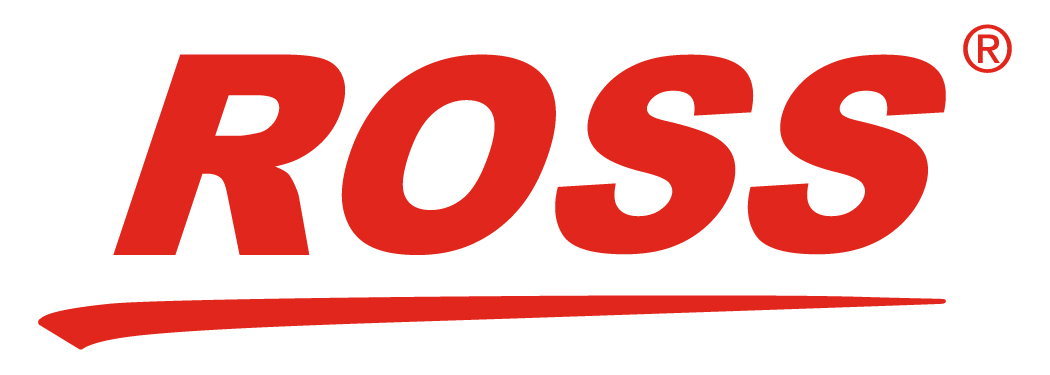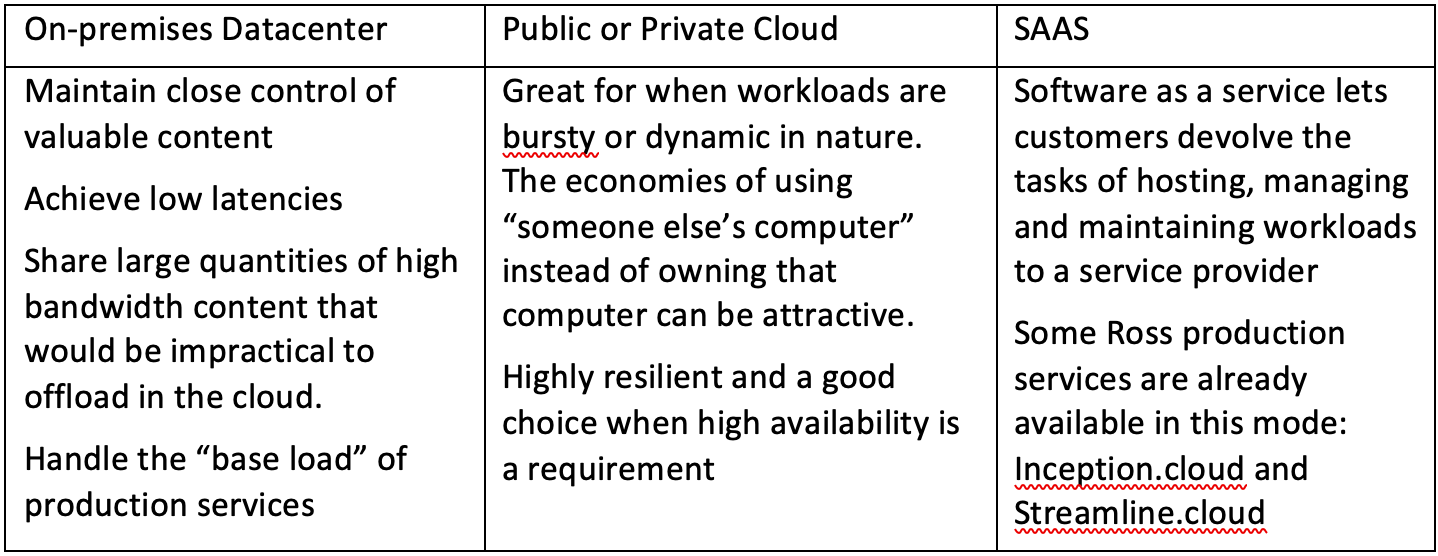
Live production workloads moving to virtualization, cloud

Cloud computing and virtualization continue to rank among the top 10 technology trends in the media and entertainment industry, according to Devoncroft Partners’ Big Broadcast Survey (BBS).
Why is this so? And what does it mean in practice?
The motives are almost purely business driven. Virtualization has already delivered benefits of greater utilization, higher flexibility, easier maintenance and management plus the ability to roll out new services quickly in the enterprise.
Case study: a few years ago, Ross Video consolidated its enterprise network of approximately 60 physical servers that were providing everything from email to ERP services onto the same number of Virtual Machines (VMs) running on just 5 hosts. The company experienced no degradation in service, but a massive savings in power, cooling, space, and an increase in availability and ease of management.
It’s no surprise that our customers want to realize matching benefits for live production.
Before you can process video and audio in the Cloud, you have to get it there, and you won’t find SDI spigots anywhere within a datacenter. That’s why the BBS’s current #1 trend, IP Networking & Content Delivery goes hand-in-hand with virtualization.
It’s only when live content can travel over IP networks that it can be processed on virtualized resources. With SMPTE’s ST2110 suite and other standards reaching maturity and diffusing into the marketplace, it’s now becoming practical to support entire live production workloads on VMs.
What is Virtualization?
Virtualization presents physical resources (compute, memory, storage, network) as logical ones that can be used by multiple “guests” otherwise known as Virtual Machines or VMs. The resources typically reside in powerful servers, known as “hosts.”
The VMs can either live in an on-premises datacenter or in the cloud. Each has their relative merits, summarized here:

Can Everything be Virtualized?
No. Or at least, not yet. Some products used in live production such as robots, microphones, lights and cameras will never be virtualized (though the processing and control for them can be). Everything else is theoretically virtualizable, but whether it’s currently practical depends on the product.
Those with high I/O counts, and ones that rely on processing that cannot be supported by CPU or GPUs lie at the “not practical” end of the spectrum. We’ll get there eventually, but not soon. At the “straightforward” end of the spectrum are products like OverDrive and others that more closely resemble a standard IT-type application and are already on-air for customers that host them in VMs. Ross’ XPression graphics system lies in the middle of this spectrum.
By working closely with technology partners at NVIDIA®, Mellanox®, VMware® and Cisco™ we’ve been able to demonstrate virtualized instances of XPression that deliver multiple channels of streams that conform to SMPTE’s 2110-21 standard for delivering precisely timed graphics content. We’re working to put the first systems on air with some of our key accounts right now.
































Comments (0)